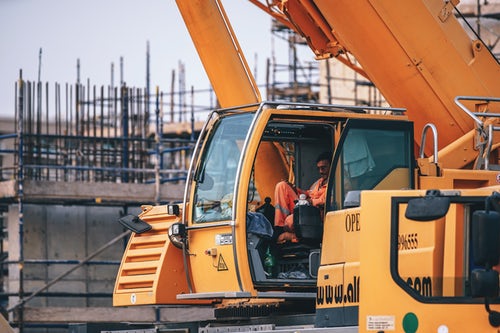Whether you live in an established metropolis or an area just entering a development boom, chances are you’re going to see a lot of cranes. Cranes are an essential tool for large-scale construction projects, and they make it possible for workers to move large components or substantial quantities of material that they would otherwise be unable to lift or assemble without significant effort.
However, the enormous benefit imparted by cranes is accompanied by a serious risk of personal injury to crane operators, other construction workers, and passersby in the vicinity of the construction site. In response to this risk, the Occupational Safety and Health Administration (OSHA) proposed the new Cranes and Derricks in Construction rule back in August of 2010. The rule never actually went into effect, according to an OSHA Trade Release published on May 18, 2018, and has undergone several revisions and rounds of comments. The same Trade Release also announced that the OSHA rule had been updated yet again.
The May 18, 2018 Update
The law firm of Gersowitz, Libo & Korek (GLK) noted on their blog that one of the most interesting features of the revised rule is the removal of mandatory, tiered certification levels for operators based on the lifting capacity of the cranes they would be operating. OSHA clarified, though, that employers would still have the option to require their employees to obtain capacity-based certifications at their own discretion – they simply would no longer be required to do so by OSHA. This change has brought enormous relief to employers in the construction industry, who previously decried the capacity-based certification requirement as ineffective and unduly burdensome.
Of course, OSHA giveth and OSHA taketh away: the National Commission for the Certification of Crane Operators (NCCCO) points out that the updated rule clarifies that employers will be required to provide certification to their employees at no cost. Although certainly onerous, this requirement is not necessarily at odds with OSHA’s policy of requiring employers to bear the cost burden of providing employees with required safety equipment and examinations in other rules.
Perhaps the most important element of the proposed rule, however, is the new set of minimum requirements for crane operator competency. Under the rule, every crane operator that is hired must undergo rigorous evaluation by their employer before they are allowed to freely operate a crane on the job site, reports the GLK blog. In practice, this means that an operator can’t leave the training room until their competence is fully tested and proven.
What exactly does a test of a crane operator’s competency entail? For starters, the operator’s ability to carry out basic crane operation will be evaluated, including judgments about the effects of wind and weather, but the rule does not stop there. The employer must also test the operator’s competence under special conditions, such as crane operation in confined spaces, near powerlines, or from a barge on the water. See the latest version of the rule from OSHA for the full requirements.
What is the Purpose of the Proposed Rule?
There is no doubt that the new rule will cost employers in the construction industry a fair bit of money, which is why it has led to such a contentious and protracted back-and-forth between OSHA and the industry. However, the rule serves a very important purpose similar to that of other OSHA regulations: to protect employees, employers, and third parties from the potentially disastrous effects of workplace accidents. In the specific context of cranes on construction sites, improper operation can lead to catastrophic injury or death, as well as the possibility of the employer being held liable in a personal injury claim.
OSHA’s proposed rule aims to prevent this unnecessary loss of life and money by ensuring that all crane operators are sufficiently competent. This is in everyone’s best interest, and there is no doubt that the rule will eventually go into full effect. Therefore, it is in every construction employer’s best interest to become familiar with the proposed rule now.
The bright side is that there is still some time for employers to make sure they are in compliance with the new rule. At the moment, employers have until November 10, 2018 to make sure that all of their crane operators are properly certified, according to the May 18, 2018 OSHA Trade Release. In light of the updates reported in that Trade Release, however, it is doubtful that full compliance can be achieved by this November. Therefore, OSHA has proposed an additional six-month extension, according to the NCCCO, which gives employers even more time to prepare.
Protect Yourself and Your Rights
Whether you are a crane operator, a worker in the vicinity of a crane, or a bystander, you are still at risk of serious injury or death from a crane accident. OSHA works hard to create regulations that, when followed, can mitigate this risk, but it never truly disappears. Therefore, it is vital that every worker do their part to ensure the safety of themselves and others while they’re on the job. If the worst does happen and you sustain serious injuries in a crane accident, make sure to consult with a personal injury lawyer as soon as possible to discuss any potential claims that you may have.
The information you obtain at this site is not, nor is it intended to be, legal advice. You should consult an attorney for advice regarding your individual situation. We invite you to contact us and welcome your calls, letters and electronic mail. Contacting us does not create an attorney-client relationship. Please do not send any confidential information to us until such time as an attorney-client relationship has been established.

